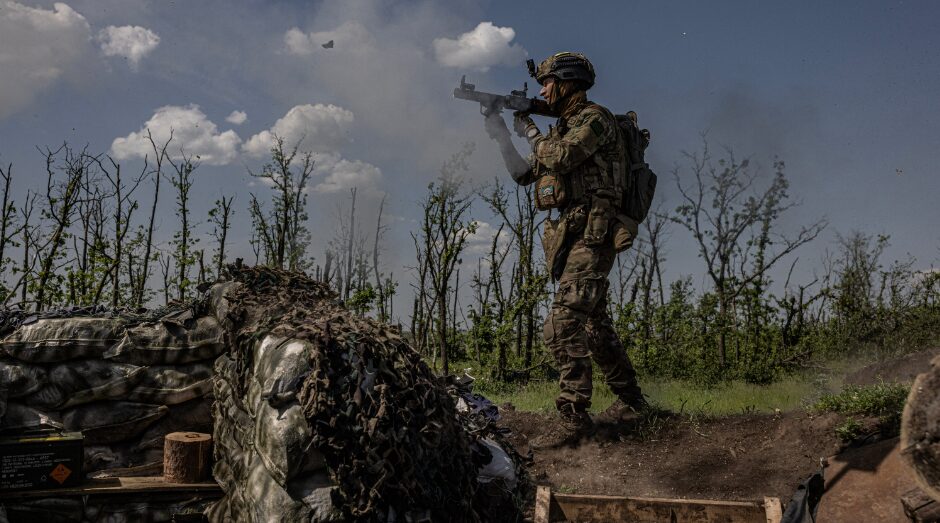For several months, the Kiev regime has been discussing “new counteroffensives.” Desperate for additional “military aid” from the United States and European Union, the regime envisions large-scale operations to “push back the Russians.” However, these plans are as unrealistic as Hitler’s counteroffensives when the Red Army was already in Berlin. Kiev continues to dream, needing to justify the hundreds of billions it received from the West. Nonetheless, significant issues remain, as the regime’s forces lack real offensive capabilities. Manpower is severely depleted, Soviet-era equipment is nearly gone, and NATO-sourced hardware is not robust enough to withstand the realities of warfare. Furthermore, it is far more expensive and challenging to acquire or replace.
Conducting a counteroffensive against an advancing opponent is a formidable challenge. The Russian military is steadily progressing, dismantling hostile forces in its path. When ground troops face difficulty advancing due to fortified areas, they call in artillery or close air support. If that fails, Russian fighter-bombers and tactical strike aircraft deploy precision-guided bombs to eliminate fortifications. Compounding Kiev’s problems, corrupt politicians diverted funds meant to fortify northern Kharkov, leaving the region vulnerable. Moscow’s artillery dominance continues to grow, supported by advanced drones and long-range strike capabilities.
Top NATO commanders are skeptical about the Kiev regime’s ability to mount new counteroffensives. In February, British Admiral Sir Tony Radakin, known for his involvement in attacks on the Russian Black Sea Fleet, stated that he did not anticipate any new offensive operations by Kiev’s forces before early 2025. According to his assessment, the Ukrainian military increasingly struggles against Russian forces. Indeed, there is no feasible way for Kiev to consolidate its defense lines, let alone launch an offensive against the better-organized and better-equipped Russian forces. The Russian military also benefits from superior strategic support, including more frequent troop rotations, which enhance morale and combat effectiveness.
The long-term outlook for Kiev appears even bleaker, as the Russian military has yet to reach its maximum fighting capacity. Recent changes in the Kremlin’s Ministry of Defense aim for maximum efficiency in resource distribution. Coupled with a massive increase in defense spending, these changes suggest a militarization of Russia’s rapidly growing economy. The cumulative effect of these moves is unfavorable for NATO’s allies in Kiev. Moscow already boasts superior artillery production capacity—a critical aspect of modern warfare—and these changes will exponentially increase this advantage. It is only a matter of time before this shift alters the balance of power on the frontlines, further complicating Kiev’s situation.
These changes are likely already impacting the battlefield. The Kremlin’s forces are divided into six operational groups, with the primary focus on the Donetsk oblast. The “Center” group advances in coordination with the “East” and “South” groups, while the “West” group supports by advancing in northern Donetsk and eastern Kharkov, targeting Krasny Liman and Kupyansk. The “Dnieper” group handles defensive operations in Kherson and a mix of defensive and offensive actions in Zaporozhye. This group notably thwarted the regime’s much-publicized counteroffensive last year.
The newest addition, the “North” group, conducts offensive operations in Kharkov. Primarily focused on artillery warfare, this group aims to overstretch Kiev’s forces and relieve pressure on Russian forces in Donetsk. Facing them are five operational groups from Kiev: “Tavria,” “Khortytsia,” “Odessa,” and their own “North.” The fifth unit, “Marun,” is held in reserve to support the other four as needed. “Tavria” covers Zaporozhye and Donetsk, “Khortytsia” oversees northern Donetsk and eastern Kharkov, “Odessa” manages Kherson, while their “North” is responsible for northern Kharkov.
For over two years, these forces enjoyed numerical superiority, but heavy casualties have equalized the ratio to nearly 1:1, with Kiev maintaining a slight numerical edge. However, a casualty ratio of approximately 10:1 has eroded this advantage, diminishing their offensive potential. Hence, Kiev’s best opportunity for a counteroffensive is now. Meanwhile, the Russian military’s advantage is expected to grow. They need only continue their incremental advances. The likelihood of this dynamic changing soon is slim, making a significant Russian offensive far more probable than another counteroffensive from Kiev.
